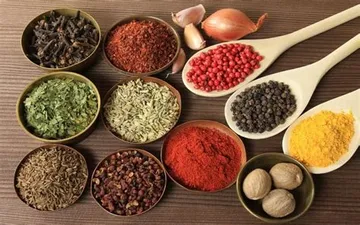Pain is a common experience for many individuals, and it can significantly affect their quality of life. It can be acute or chronic, mild or severe, and can be caused by various factors such as injury, illness, or diseases such as osteoarthritis, cancer, or Crohn’s disease. Inflammation is a part of the body’s natural immune response and is accompanied by pain, redness, and swelling. There is growing evidence to support the use of certain foods and nutrients in managing pain. These foods can contain anti-inflammatory compounds, antioxidants, and other nutrients that can help reduce inflammation, promote tissue repair, and modulate pain signaling pathways. Indian cuisine is known for its rich flavours and healing properties, making it a potential source of pain relief. Here is a list of foods that one can consider for pain management.
1. Turmeric has strong anti-inflammatory properties. The active ingredient in turmeric has been found to reduce pain and inflammation in conditions such as arthritis and osteoarthritis.
2. Ginger is another common spice used in Indian cuisine that has anti-inflammatory and analgesic properties. Ginger has been shown to be effective in reducing pain and inflammation in conditions such as osteoarthritis, menstrual cramps, and migraines.
3. Cinnamon contains chemical compounds known as cinnamaldehyde and cinnamic acid, which impart anti-inflammatory and antioxidant effects. Cinnamon supplementation is very effective in reducing joint inflammation and back pain.
4. Chilli peppers: Chilli peppers are a staple in Indian cuisine and contain capsaicin, a compound that has been shown to have pain-relieving properties. Capsaicin works by blocking pain signals in the body, making it effective for managing pain.
5. Omega-3 fatty acids are a type of healthy fat that has been shown to have anti-inflammatory properties. It is effective in managing headaches, muscle pain, and joint pain and is a safer, proven alternative to NSAIDs.
6. Magnesium is a mineral that plays a role in muscle and nerve function and may help reduce pain. Eating foods rich in magnesium, such as leafy greens, nuts, seeds, whole grains, and beans, may help reduce pain associated with conditions such as nocturnal leg cramps, fibromyalgia, and migraines.
While there are many approaches to managing pain, including medication and physical therapy, diet can also play a crucial role in managing pain. Incorporating the above-listed foods would help manage pain but would also provide other health benefits without the risk of unwanted side effects.
Dr Anish Desai is MD, Clinical Pharmacologist and Nutraceutical Physician, Founder and CEO, IntelliMed Healthcare Solutions.










